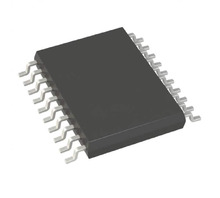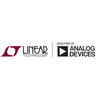Manufacturer Part Number
LTC3115IFE-1#PBF
Manufacturer
Analog Devices
Introduction
The LTC3115IFE-1#PBF is a versatile buck-boost voltage regulator with adjustable output. Suitable for applications requiring a regulated output with input voltage above, below, or equal to the output voltage.
Product Features and Performance
Adjustable buck-boost voltage regulator
Positive output configuration
High efficiency and power delivery up to 2A output current
Wide input voltage range from 2.2V to 40V
Wide output voltage range from 2.7V to 40V
High frequency switching from 100kHz to 2MHz
Integrated synchronous rectifier for improved efficiency
Supports surface mount technology
Product Advantages
High flexibility with adjustable voltage settings
Consistent performance across a wide range of input and output voltages
High efficiency reduces thermal footprint and energy consumption
Compact TSSOP package saves board space
Key Technical Parameters
Voltage Input (Min): 2.2V
Voltage Input (Max): 40V
Voltage Output (Min/Fixed): 2.7V
Voltage Output (Max): 40V
Current Output: 1A, 2A
Frequency Switching: 100kHz ~ 2MHz
Operating Temperature: -40°C ~ 125°C (TJ)
Quality and Safety Features
Temperature range certification for reliability in extreme conditions
Built-in synchronous rectification for performance efficiency and safety
Compatibility
Suitable for use in various electronic applications requiring power management, adaptable to multiple types of circuits due to its wide voltage ranges.
Application Areas
Portable devices
Automotive electronics
Telecommunications
Power supply modules
Product Lifecycle
Currently active
Not nearing discontinuation
Replacement or upgrade models might be available aligning with future technology advancements
Several Key Reasons to Choose This Product
Versatile usage due to wide input and output voltage range ensuring compatibility with diverse applications
High power efficiency minimizes energy loss and enhances system reliability
Compact size and surface mount compatibility allow for usage in space-constrained applications
The capability to switch between step-up and step-down modes offers design flexibility
High switching frequency range allows optimization of size and performance of related components such as inductors and capacitors




 LTC3115IDHD#PBFLT
LTC3115IDHD#PBFLT LTC3115IFE-2Linear Technology
LTC3115IFE-2Linear Technology